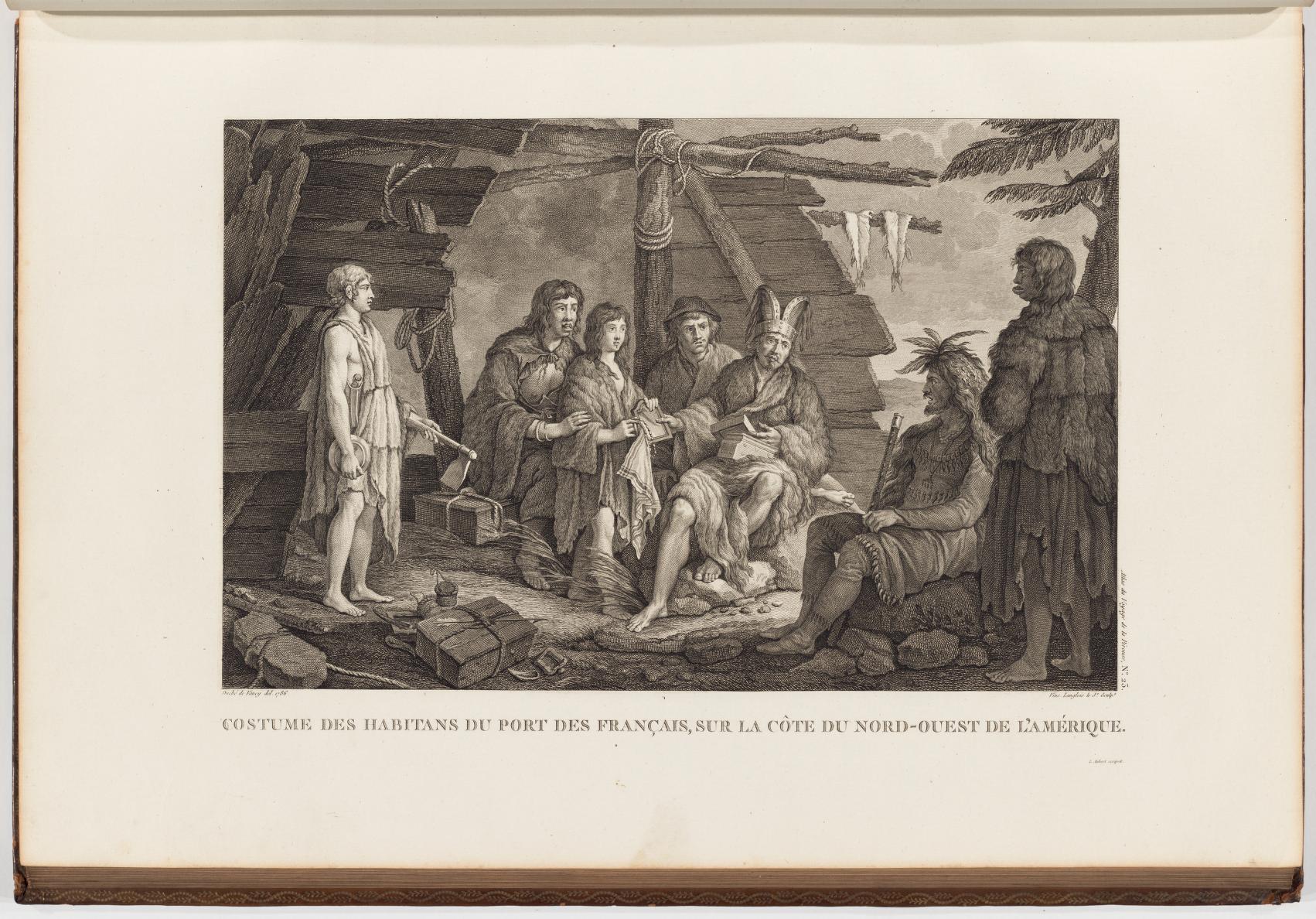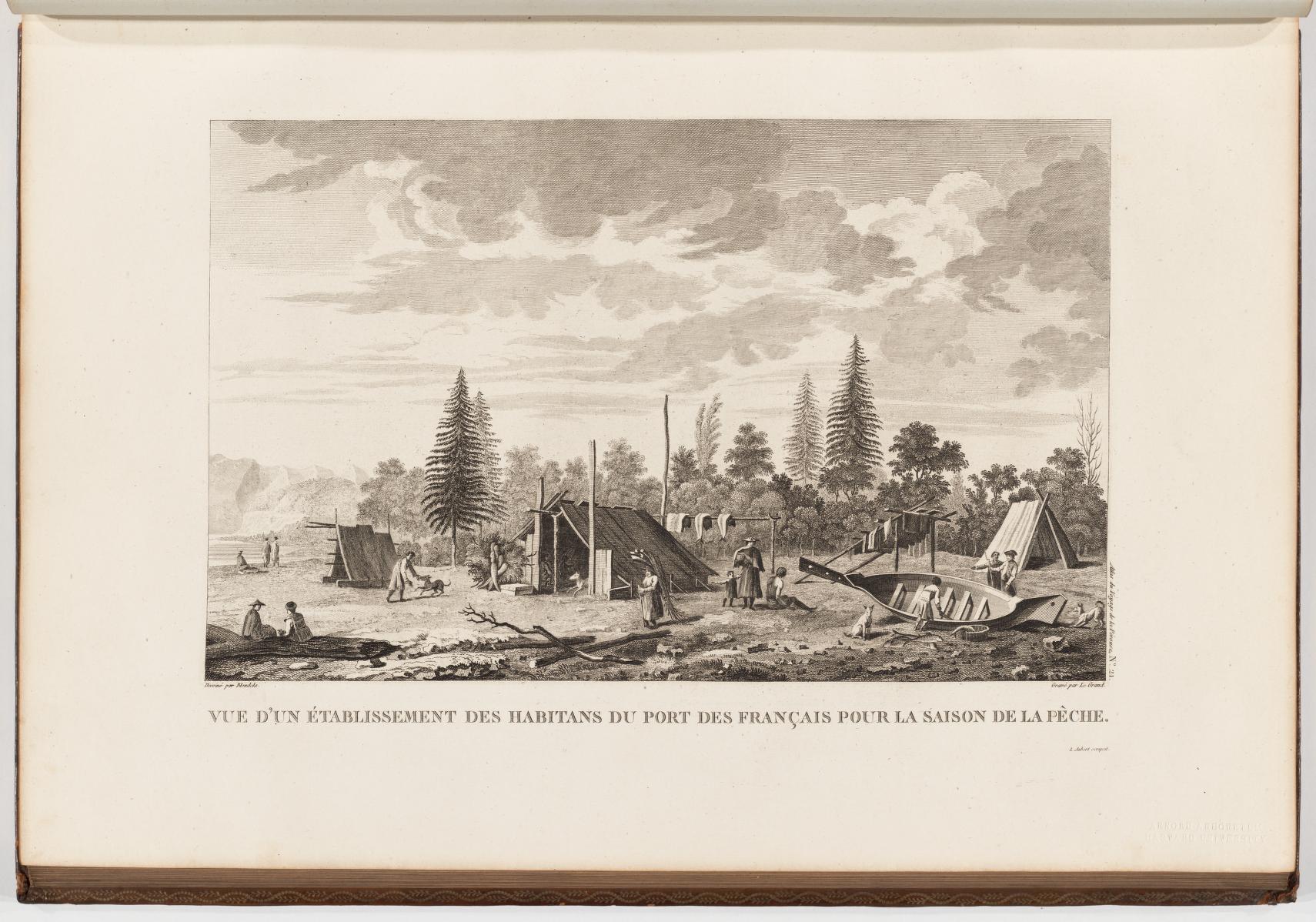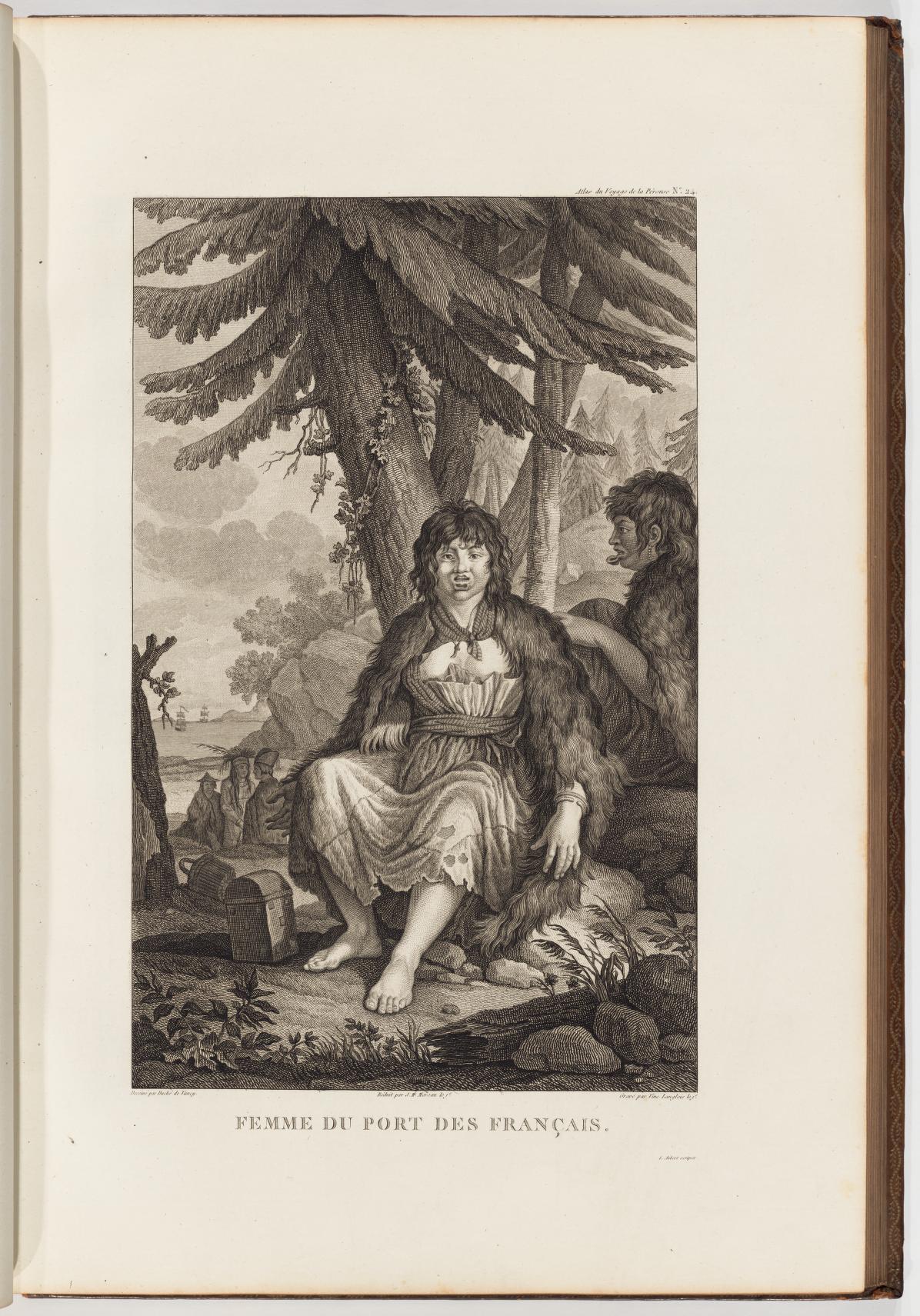Shipwreck Off the Coast of Alaska
Atlas
Throughout his exploratory mission, La Pérouse kept a journal of his travels. He supplemented his writings with images drawn by the expedition’s two artists, which were published as engravings, along with his text, in the Atlas on display nearby. The following are additional images from the Atlas depicting scenes of Lituya Bay, including the Tlingits who lived there.

Courtesy Biodiversity Heritage Library
“We learned that seven very large canoes had been wrecked in the pass not long before. An eighth had escaped… …This [canoe] had a frame and strakes like our boats, and the well-made structure was sheathed in sealskins. It was so well sewn that the best workman in Europe would find it hard to copy.” –Atlas of the Voyage of La Pérouse

Courtesy Biodiversity Heritage Library
“Their hair is worn long, braided and sprinkled, on the occasion of great ceremonies, with the down of seabirds. A mere skin or fur covers their shoulders; the rest of their body is completely bare, except for the head, which is usually covered with a small straw hat, very artistically plaited. Sometimes they place over their heads two-cornered hats, eagle feathers, or whole heads of bears into which they have inserted a wooden skull-cap.” –Atlas of the Voyage of La Pérouse

Courtesy Biodiversity Heritage Library
“I have given the name of village to three or four wooden sheds, roofed only with planks or tree bark. In the middle of this hearth was a fire over which some halibut and salmon were hung, drying in the smoke. Eighteen or twenty people lived in each shed: the women and children on one side, the men on the other… …Each one had its canoe and some kind of chief.” –Atlas of the Voyage of La Pérouse

Courtesy Biodiversity Heritage Library
“[The women] have the lower lip split at gum level across the width of the mouth; they wear a wooden saucer which rests against the gums with the split lip serving as an outer edging so that the lower part of their mouths protrudes by two or three inches. Mr. Duché Devancy’s picture, which is of the greatest exactitude, will explain better than words this custom.” –Atlas of the Voyage of La Pérouse

